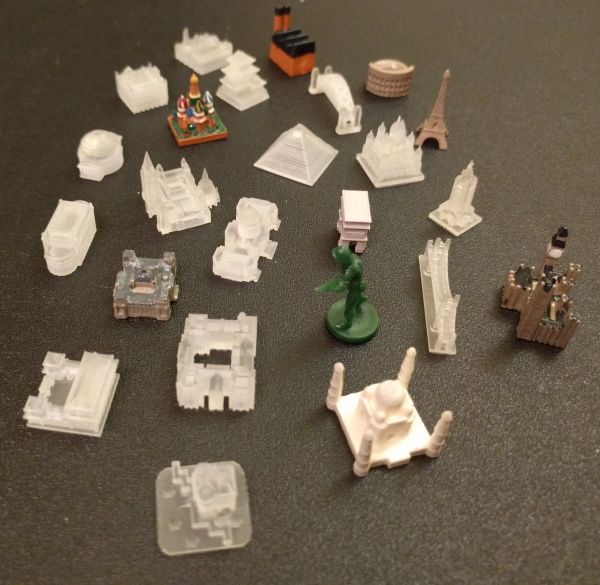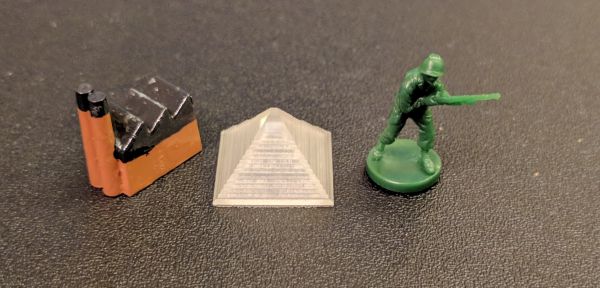Thanks for making the video, that was great! I’ll try to answer a few of your questions that came up in the video below:
Q: Why are there two pieces for Paris?
A: When I made the first set of capital pieces there were people who wanted the Eiffel Tower and others who wanted the Arch de Triumph. Since the Eiffel Tower is a civilian landmark while the Arch de Triumph has a military background (commemorating the French who fought and died in the revolution and Napoleonic wars) I thought both landmarks had a strong case to be included. The real reason there are two is that the Eiffel Tower was easy to make, so I added it in as an extra.
Bonus answer: The Arch de Triumph can also be used to represent the Arcul de Triumf in Bucharest if you play with that victory city.
Q: Why are there two pieces for Hong Kong?
A: The Queen’s Building represents British rule of Hong Kong while the Wong Tai Sin temple represents a native Chinese landmark. I also tried to keep the Queen’s building smaller, for people who were tight on board space, while the temple is larger for the crowd that prefers bigger pieces. Finally, I figured that the Wong Tai Sin temple could easily be used as a victory city for any other Chinese city in the event that was desirable.
I also want to clarify for anyone late to the thread that the sculpts for Leningrad, Cairo, and Ottawa were scaled down in the “Large” set of victory cities from what you saw in the video. The Honolulu Aloha Tower sculpt was scaled up for the “Small” set of victory cities so that it is closer in size to the one in the video (video was of the “Large” set).
The difference in size between the “Small” and “Large” sets is about 30-40% – put differently, it’s about 5mm different for any given piece. So if you are worried about board space, look at the smaller set; whereas if you are most interested in visible detail and pieces that stand out on the board, you may like the larger set.














